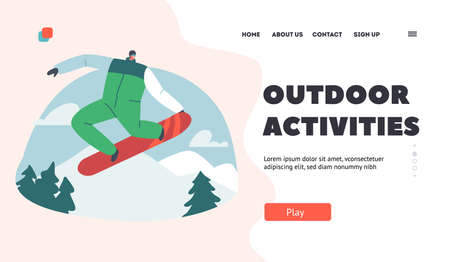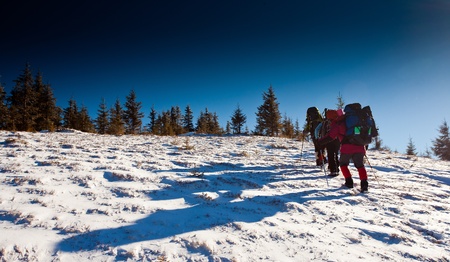Introduction to Cross-Country Ski Camping
If youre searching for a thrilling winter adventure that combines the serenity of snow-covered landscapes with the excitement of backcountry travel, cross-country ski camping might be your next favorite pursuit. This unique outdoor activity blends the endurance and skill of Nordic skiing with the immersive experience of overnight camping in the wilderness. For outdoor enthusiasts across the United States, cross-country ski camping offers a new way to explore national parks, state forests, and remote trails during the quieter, colder months. Unlike traditional summer backpacking, this winter pastime challenges adventurers to adapt to snowy terrain, frigid temperatures, and the peaceful silence that only winter can bring. Whether youre seeking solitude under a blanket of stars or the camaraderie of friends around a campfire, cross-country ski camping delivers an unparalleled connection to nature while testing your abilities in a truly unique environment.
Essential Gear and Packing Tips
When it comes to cross-country ski camping, having the right gear can make or break your winter adventure. The goal is to stay warm, dry, and comfortable while keeping your pack light enough for long days on the trail. Here’s a rundown of must-have gear, smart packing strategies, and essential tips to help you prepare for an unforgettable journey.
Must-Have Gear Checklist
| Category | Recommended Items | Tips |
|---|---|---|
| Ski Equipment | Cross-country skis, ski boots, adjustable poles, ski skins (for traction) | Choose backcountry-specific skis and boots for better stability and insulation. |
| Camping Gear | 4-season tent, cold-weather sleeping bag (rated -10°F or lower), insulated sleeping pad | A foam pad under an inflatable mat adds extra warmth and insulation from snow. |
| Clothing | Moisture-wicking base layers, fleece mid-layers, waterproof-breathable shell, down jacket, insulated gloves/mittens, wool socks, neck gaiter/balaclava | Avoid cotton; layer up so you can adjust as temperatures fluctuate. |
| Cooking & Hydration | Stove with winter fuel (white gas recommended), lightweight pot set, insulated water bottles/thermoses, freeze-dried meals, high-calorie snacks | Keep water bottles in your sleeping bag at night to prevent freezing. |
| Safety & Navigation | Map & compass (GPS optional), headlamp with extra batteries, avalanche beacon/probe/shovel (if traveling in avalanche terrain), repair kit, first-aid kit | Always carry tools for basic repairs—broken gear in winter can be dangerous. |
| Other Essentials | Sunscreen & lip balm (SPF 30+), sunglasses/goggles, small multi-tool, lightweight camp chair or sit pad | The sun’s rays reflect off snow; protect your skin and eyes year-round. |
Packing Strategies for Ski Camping
- Distribute Weight Evenly: Use a large backpack (60-75L) or pull a sled/pulk for heavier loads. Keep heavy items close to your back for balance.
- Pack Dry Bags: Organize gear in waterproof stuff sacks or compression bags. Label each for easy access to essentials like food or extra layers.
- Categorize by Use: Group items you’ll need at the same time—such as your sleep system or kitchen kit—so you’re not digging through your pack in the cold.
- Leave No Trace: Bring reusable containers and pack out all trash. Carry a small trowel if nature calls far from facilities.
Staying Warm and Comfortable on the Trail
- Dress in Layers: Add or remove clothing as needed to avoid sweating. Wet clothes chill fast once you stop moving.
- Nourish Yourself: Eat high-energy foods regularly—think trail mix, cheese sticks, jerky—to keep your body fueled and warm.
- Melt Snow Safely: Boil snow for drinking water; never eat snow directly as it lowers core temperature.
- Create a Cozy Sleep Setup: Fluff up your sleeping bag before use and stash tomorrow’s clothes inside it overnight to warm them up.
- Tend to Your Feet: Change socks daily and keep feet dry. Consider using vapor barrier liners if temps dip below zero.
Pro Tip: Practice Setting Up Camp Before You Go!
If you’re new to ski camping or using winter-specific gear for the first time, spend an afternoon in your backyard or local park practicing setup. Getting familiar with pitching your tent on snow and managing bulky gloves will save precious time—and frustration—when conditions get tough out in the wilderness. With these essentials packed and strategies in mind, you’ll be ready to tackle whatever the trail throws your way this winter!

3. Planning Your Trip: Picking Routes and Campsites
When it comes to cross-country ski camping in the U.S., careful planning is essential to ensure both safety and enjoyment. Start by researching trails that match your skill level and desired challenge. The U.S. offers a wide variety of groomed and backcountry routes, from the snowy forests of Minnesota’s Boundary Waters to the open expanses of Yellowstone National Park.
Understand Park Regulations
Before finalizing your trip, familiarize yourself with local park regulations. Many national parks and state forests have specific rules regarding overnight camping, campfire use, and group sizes. Permits may be required for certain areas, especially during peak winter months or in protected wilderness zones. Always check with park rangers or official websites for up-to-date information.
Assess Trail Conditions
Trail conditions can change rapidly due to weather, snowfall, and maintenance schedules. Look for recent trail reports online or contact visitor centers to ask about grooming status, avalanche risks, and accessibility. Remember that some trails may be closed or rerouted during heavy snowfalls or due to wildlife activity.
Top Destinations Across the Country
If you’re looking for inspiration, consider classic cross-country ski destinations like the Methow Valley in Washington, which boasts over 120 miles of interconnected trails and welcoming campsites. In Colorado, Rocky Mountain National Park provides stunning alpine scenery and designated winter camping spots. For those on the East Coast, Vermont’s Catamount Trail offers a mix of backcountry huts and primitive campsites along its 300-mile route. Wherever you go, choose locations that balance scenic beauty with practical access to water sources and emergency services.
By taking time to research routes, understand local guidelines, and evaluate trail conditions, you’ll set yourself up for a memorable—and safe—cross-country ski camping adventure.
4. Safety First: Navigating Winter Hazards
Cross-country ski camping in the backcountry offers incredible experiences, but it also comes with unique safety challenges. Whether you’re a seasoned winter explorer or new to the sport, prioritizing safety is essential to ensure your adventure is both enjoyable and secure.
Cold Weather Safety
Staying warm and dry is critical. Always layer your clothing—start with moisture-wicking base layers, add insulating mid-layers, and top it off with a waterproof shell. Avoid cotton, as it retains moisture and can increase the risk of hypothermia. Remember to protect extremities with insulated gloves, hats, and wool socks. Stay hydrated and fuel your body regularly to maintain energy levels in cold temperatures.
Avalanche Awareness
If your route takes you into mountainous areas, avalanche risk is a serious concern. Check avalanche forecasts before heading out, carry essential safety gear like beacons, probes, and shovels, and know how to use them. Take an avalanche safety course to recognize warning signs and learn rescue techniques.
Avalanche Gear Checklist
| Essential Item | Purpose |
|---|---|
| Beacon/Transceiver | Locate buried victims |
| Probe | Pinpoint victim’s location in snow |
| Shovel | Excavate snow quickly during rescue |
Navigation Skills
Winter landscapes can look deceptively similar, making navigation tricky. Always carry a map, compass, and GPS device—and know how to use them. Mark your route beforehand and stay aware of landmarks. In whiteout conditions or heavy snowfall, visibility can drop rapidly; if this happens, stop traveling until you regain orientation.
Emergency Preparedness in the Backcountry
The remote nature of cross-country ski camping means help may not be immediately available in an emergency. Pack a well-stocked first aid kit, repair supplies for your gear, extra food and water, and an emergency shelter such as a bivy sack or space blanket.
Winter Emergency Essentials Table
| Item | Why You Need It |
|---|---|
| First Aid Kit | Treat injuries and illnesses promptly |
| Multi-tool/Repair Kit | Fix broken gear on the go |
| Emergency Shelter | Shelter from wind/cold if stranded |
| Extra Food & Water | Sustain energy during delays/emergencies |
Pro Tip:
Always leave your trip itinerary with someone you trust back home—including your planned route and expected return time. Cell service may be unreliable; consider carrying a satellite communicator for added peace of mind.
5. Setting Up Camp in Snowy Conditions
One of the most crucial skills for cross-country ski camping is knowing how to set up camp in snowy, often unpredictable conditions. Whether you’re pitching a tent or building a snow shelter, preparation and technique are key for a safe and comfortable winter night outdoors.
Pitching Your Tent on Snow
When camping in deep snow, start by stomping out a flat platform with your skis or boots. This not only creates a stable surface but also helps insulate your tent from the cold ground. Use snow stakes or bury regular stakes horizontally in the snow to secure your tent against gusty winds. Choose a site away from avalanche paths and under sturdy trees if possible—these spots offer some natural protection from the elements.
Building Snow Shelters
If you want to take your winter camping experience up a notch, try building a quinzee or an igloo. Digging into a drift or piling snow to hollow out later can provide excellent insulation and wind protection. Always ensure proper ventilation in any snow shelter to prevent carbon monoxide buildup from stoves or breath. Practice beforehand so you’re efficient and confident if you need this survival skill on the trail.
Creating a Cozy, Safe Space
Your overnight comfort depends on smart layering and organization. Lay down an insulating pad or two beneath your sleeping bag—foam pads work great because they don’t lose warmth when compressed. Bring an all-season sleeping bag rated for temperatures well below what you expect at night. Inside your tent or shelter, keep essentials like headlamps, snacks, and extra layers easily accessible. Hang damp clothes where they can dry without freezing, and use hot water bottles in your sleeping bag for added warmth.
Extra Tips for Winter Camping Safety
Never cook inside a closed tent to avoid fire hazards and dangerous fumes; instead, use the vestibule area with good ventilation. Store food securely outside your sleeping area to deter wildlife, even in winter conditions. Finally, check weather updates regularly, have an emergency communication plan, and always let someone know your route before heading into the backcountry.
6. Cooking and Staying Energized Outdoors
When it comes to cross-country ski camping, fueling your body for the cold and exertion is just as important as staying warm. Smart meal planning ensures you have enough calories and nutrients to keep your energy up during long days on the trail.
Meal Planning Tips for Winter Camping
Prioritize High-Calorie, Easy-to-Prepare Foods
Winter adventures demand more calories, so pack foods that are high in healthy fats, proteins, and complex carbs. Think nut butters, trail mix, jerky, cheese, instant oatmeal, and energy bars. These foods are lightweight, non-perishable, and easy to eat on the go.
Plan Hot Meals for Warmth and Morale
A hot meal can make all the difference after a chilly day of skiing. Plan simple dinners like freeze-dried meals, pasta with sauce packets, or rice and beans. Many brands offer lightweight dehydrated options that only require boiling water—a huge plus when you want to minimize cooking time in cold weather.
Winter Camp Cooking Techniques
Choose the Right Stove
Canister stoves may struggle in freezing temps; consider a liquid fuel stove for reliable performance. Always bring wind protection for your stove and practice safe cooking away from your tent to prevent carbon monoxide buildup.
Melt Snow Safely
If youre relying on snow for water, melt it thoroughly before use and consider carrying a small filter or purification tablets for added safety. Boiling extra water at night provides both hydration and heat—fill a bottle with hot water and keep it in your sleeping bag for warmth.
Keeping Your Energy Levels Up
Snack Often, Snack Smart
Frequent snacking is key to maintaining energy in the cold. Pack snacks in accessible pockets so you can eat without stopping. Gummy candies, dried fruit, chocolate, and granola bars stay soft enough to eat even when temperatures drop.
Stay Hydrated
It’s easy to forget about drinking water in winter, but dehydration can sap your energy fast. Use insulated bottles or keep water inside your jacket to prevent freezing. Warm drinks like tea or broth also help keep you hydrated and cozy.
With thoughtful meal planning and some basic winter cooking know-how, you’ll stay fueled up and ready to tackle each day’s adventure on your cross-country ski camping trip.
7. Leave No Trace and Respecting Nature
When it comes to cross-country ski camping, preserving the pristine beauty of winter landscapes is just as important as enjoying them. Practicing Leave No Trace principles isn’t just a good idea—it’s essential for ensuring that these snowy environments remain unspoiled for future adventurers. Here are some best practices for minimizing your environmental impact while ski camping.
Plan Ahead and Prepare
Before heading out, research your route, check weather conditions, and understand any regulations specific to the area you’re visiting. By planning meals and gear efficiently, you can reduce waste and avoid carrying unnecessary items that could be left behind.
Travel and Camp on Durable Surfaces
Whenever possible, stick to established trails and campsites. In winter, snow acts as a natural buffer, but it’s still important to avoid damaging fragile vegetation beneath thin snow cover. Set up camp at least 200 feet away from lakes and streams to protect water sources.
Dispose of Waste Properly
Pack out everything you bring in—including food scraps and biodegradable materials. Human waste should be managed according to local guidelines; in many cases, this means using portable toilet systems or designated facilities. Never leave trash or toilet paper behind, even if you think it will decompose over time.
Respect Wildlife and Other Visitors
Winter can be especially challenging for wildlife, so observe animals from a distance and never feed them. Keep noise levels low and respect the solitude that many seek in snowy backcountry areas. Yield the trail when necessary and be courteous to fellow outdoor enthusiasts.
Leave What You Find
Avoid picking up natural souvenirs like pinecones or rocks, and don’t alter the landscape by building structures or digging unnecessary snow pits. Preserve the scene so others can experience its untouched wonder.
Minimize Campfire Impact
In many winter environments, campfires aren’t practical or permitted. Use portable stoves for cooking instead of burning wood, which can be scarce and vital to the ecosystem. If fires are allowed, keep them small and use established fire rings whenever possible.
By following these Leave No Trace principles on your cross-country ski camping adventures, you’ll help protect America’s stunning winter wilds—ensuring they remain magical destinations for generations to come.


